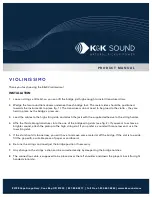
Mounting
Leuze electronic GmbH + Co. KG
BPS 307i
35
000040
000044
000064
000068
2
2
1
3
4
G40
Leuze
G40
Leuze
G40
Leuze
G40
Leuze
1
Preceding bar code tape
2
Cut mark
3
Gap, at least 300 mm
4
Subsequent bar code tape
Fig. 6.3:
Gap in cut bar code tape to avoid double positions
NOTICE
No glossy gaps in the cut bar code tape!
Ä
Ensure that there are matt, bright surfaces behind the gaps in the BCB.
Polished, reflective, and high-gloss surfaces in the scanning beam may impair the measure-
ment quality of the BPS.
6.1.3
Mounting the BCB
Mount the BCB as follows:
Ä
Check the surface.
It must be flat, free of grease and dust, and be dry.
Ä
Define a reference edge (e.g., metal edge of the busbar).
Ä
Remove the backing and affix the BCB along the reference edge tension free.
Ä
Secure the bar code tape to the mounting surface by pressing down with the palm of your hand. When
affixing, make certain that the BCB is free of folds and creases and that no air pockets form.
NOTICE
When mounting, do not pull on the BCB!
The BCB is a plastic tape that can be stretched by strong mechanical tension.
The stretching results in lengthening of the tape and distortion of the position values on the
BCB.
While the BPS can still perform the position calculation in the event of distortions, the absolute
measurement accuracy is no longer ensured in this case. If the values are taught using a teach-
in process, stretching of the BCB is irrelevant.
NOTICE
If a bar code tape was damaged, e.g., by falling parts, you can download a repair kit for the BCB
from the Internet (see chapter 11.2.2 "BCB repair with repair kit").
Ä
Use the bar code tape created with the repair kit only temporarily as an emergency solution.
















































